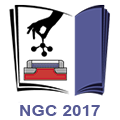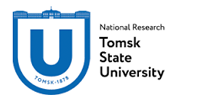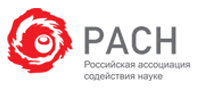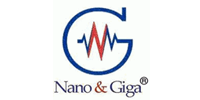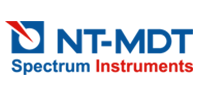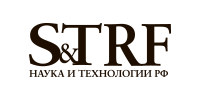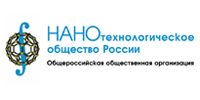Nano and Giga Challenges in Electronics, Photonics and Renewable Energy
Current Trends in Radiophysics
Symposium and Summer School (Tutorial Lectures)
Tomsk, Russia, September 18-22, 2017
nanoandgiga.com/ngc2017 and apr.tsu.ru
Commentary Viktor Bykov
The development of technologies directly at space stations or special space technology complexes is today an extremely important task. One of the problems, without solution of which progress in space exploration is hardly possible, is the task of providing stations with "clean" energy. The increase in the number of orbital objects makes the use of "solar" energy converters unrestricted. Without alternative, it follows from the natural requirement of "cleanliness" of the source for the environ-ment, which excludes the widespread use of stations with nuclear reactors.
This problem can be solved by constructing a technological module for creating solar cells based on molecular beam epitaxy technologies. The idea of the complex is based on the shadow effect created by the moving screen, immediately behind which the ultrahigh vacuum conditions are created, which makes it possible to realize the technologies of mo-lecular beam epitaxy - the basis for creating highly efficient solar energy converters with an efficiency of more than 40%. Batch tests of the technological complex are currently being carried out during the project at the Institute of Semicon-ductor Physics of the Siberian Branch of the Academy of Sciences with the financial support of JSC "Information Satel-lite Systems. Academician M. F. Reshetnev ".An essential element of technology implementation is the provision of the technological module with adequate analyti-cal equipment. At present, it seems that it is expedient to use atomic force microscopy as the basic analytical and meas-uring equipment, which provides the possibility of controlling a number of surface properties: topographic analysis, rigidity with numerical definition of the Young's modulus, friction forces, adhesion properties of materials, photoemis-sion properties, piezoelectric properties of surfaces. When expanding the properties of the system, integration of spec-tral methods in combination with atomic force microscopy methods is also possible. In this case, it becomes possible to register not only the physical properties of surfaces, but also the registration and identification of surface functional groups, which makes it possible to optimally optimize the ongoing technological processes of the formation of func-tional elements.
The analytical technique of the station can provide technology needs, as well as the ability to study and control the deg-radation processes of various materials under orbital space flight conditions. Changes in the structure and parameters of materials occur under the action of near-Earth plasma and are currently not fully understood.
Our company aims to develop an atomic-force microscopes operating outside and inside the station, which will pro-vide powerful analytical support with the study of the dynamics of processes under zero-gravity conditions, including the dynamics of changes in the properties of microorganisms, cellular structures that arise in space flight conditions. The possibility of using atomic-force microscopy in space became real after the introduction of the technology of car-tridge probe systems developed in the latest codes by NT-MDT Spectrum Instruments, which eliminates the need for frequent replacement of cantilevers, practically impossible outside the orbital station. We intent to develop software and controllers with the ability to control processes as a research en-gineer working directly at the station, and remote control experts from the Earth. Software products will also provide the opportunity to conduct research, accumulation and data transfer without the operator's involvement - offline. Controllers and electronics of the whole system should be made in a radiation-resistant version, allowing long-term operation of the system.
The idea of creating electricity generators from regolith was suggested by researchers four years ago. The fact is that lunar dust is 50 percent silicon dioxide and 50 percent oxides of twelve different metals, including aluminum, magnesi-um, and iron. Thus, regolith contains virtually all the components necessary to create a solar battery. Construction of the lunar power plant would require special robots, according to New Scientist. Such devices, powered by solar energy, will crawl over the surface of the natural satellite of our planet, collect regolith, melt it and then lay it on the surface of the moon with a thin smooth layer. Scientists have already managed to prove the via-bility of the technique in laboratory conditions using the JSC-1 powder, identical in the properties of lunar dust. In the near future, researchers intend to conduct a series of experiments, during which it is planned to study the possibility of manufacturing all the key components of solar batteries from regolith, and not just panels. It should be noted that the calculated efficiency of the lunar power plant will not exceed one percent (the efficiency of modern solar batteries is about 20 percent). However, low efficiency is not a critical parameter, since the area for creat-ing solar batteries from regolith on the Moon is practically unlimited.
At the NGC2017 conference in Tomsk I plan to discuss these ideas and proposals with collegues Russia and abroad and potentially create a new international consortium of for materials and device design for space technologies. I invite conference participants to join our satellite workshop on Nanotechnology in Space on September 19th.
